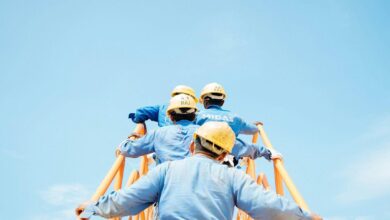Children at risk of lead poisoning in Cuba
Journalist Mónica Baró made a report that tracks Cuban families whose relatives and children in the San Miguel del Padrón neighborhood are victims of lead poisoning

Group of children playing and running. / Photo: Pixabay – Reference Image
LatinAmerican Post | Carolina Rodríguez Monclou
Listen to this article
Leer en español: Niños en riesgo de envenenamiento por plomo en Cuba
Saturnism invaded the San Miguel del Padrón neighborhood in Cuba in a slow and subtle way, with children being the most affected, especially those under six.
Mónica Baró, winner of the Text category in the seventh edition of the Gabriel García Márquez Festival for her work “The blood was never yellow”, made a report that tracks Cuban families whose relatives and children in the San Miguel del Padrón neighborhood are victims of lead poisoning.
Baró stressed during the Gabo Festival 2019 that “in countries like Cuba, information is a privilege of the State”, referring to all the inconveniences she had during her investigation to interview official entities, who refused to cooperate because, at that time, the author was part of Barrio Periodismo, an independent media.
LatinAmerican Post had the opportunity to talk with Baró and this is what she told us.
LatinAmerican Post: What did “The blood was never yellow” on a professional level?
MB: On a professional level it is the most difficult research I have faced, because I had to investigate the convergence of two lines that are quite complicated: environmental pollution and health, and show that, first, there is environmental pollution, second, that the health effects that shown are associated with that pollution.
LP: And on a personal level?
MB: All the stories change something for you. On a personal level, it left me much more afraid about lead and heavy metals, but it also led me to environmental awareness as well.
Also read: Evo Morales announces a coup
LP: How does this research contribute to the affected community?
MB: It was possible to demonstrate that health effects were indeed associated with the problem of lead exposure in the area and leave some sort of reasonable doubt about the possibility that there is still a problem. For me, it was the most difficult thing I have done in my career, the longest also in terms of time and dedication …
LP: How do you see this pollution problem in Cuba in general?
MB: Very serious, especially since there is no transparency. As I say, you cannot have a fair idea of the dimension of the problem, not only with lead but also with other toxic substances in the environment. Unfortunately, you have no capacity; that is, the possibility of accessing studies on environmental impact and mining. Furthermore, population doesn't have access to analyzes independently of the state, because it is the state the one performing this type of analysis, which is almost always very expensive and difficult.
Read also: Situation in Chile is aggravated under military control
LP: What is the biggest obstacle you encounter regarding this issue?
MB: There are no independent laboratories where you can analyze samples of anything, or independent clinics where you can take people for analysis. Those are the main challenges and the biggest problem is access to information.
Although the Cuban government has moved families with children with the highest levels of lead in the blood and has banned the construction of more houses in the area, the neighborhood is still inhabited. This means population living there remains exposed to lead.
"There was always a secrecy about this issue," says the journalist.





